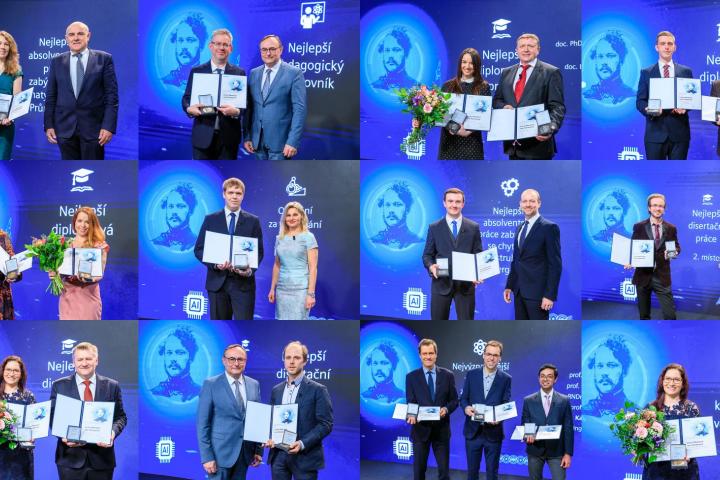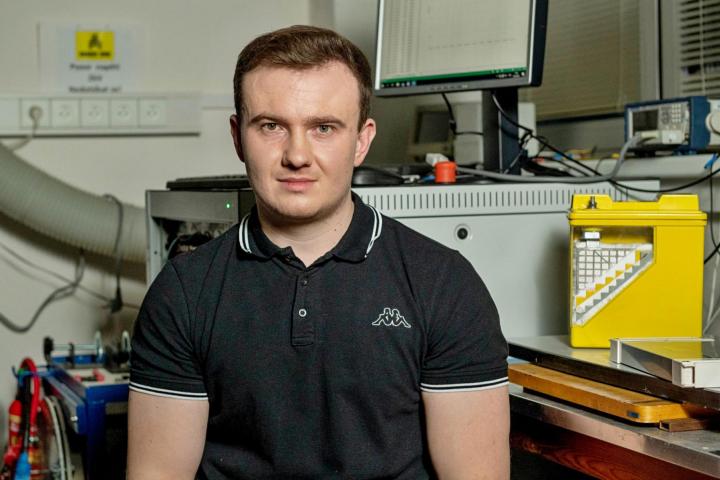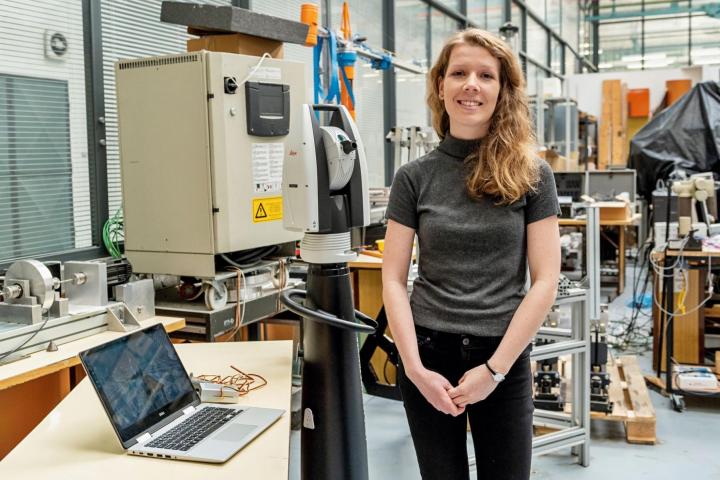
The award for the best work on the topic of Industry 4.0 was won by Ing. Megi Mejdrechová from the Faculty of Mechanical Engineering. Her diploma thesis entitled Design of a robotic painting workplace with the use of motion sensing and imitation of a painter was awarded. In her diploma thesis, Megi Mejdrechová describes an original way of robotizing small-batch industrial painting. In smaller paint shops, one usually paints with a hand-held spray gun. It's working in a dirty and unhealthy environment, which is why it's a problem to get employees to paint shops. Deploying robots could solve this situation, but the problem is how to program the robots correctly to paint well. The solution proposed in this work uses sensing the movement of the painter. The scanned data is processed and the robot is automatically programmed according to them. He can then repeat the painting exactly according to the person. It's similar to Kinect or Wii games, where hand movement is transmitted through the controller to virtual reality. In this case, however, a small camera attached to the spray gun is enough for the painter, while the movement does not control his game character, but an industrial robot. The painter will once show the robot how to paint the product, and the robot will paint the rest of the products in series accordingly. Details of the study are available here.
V kategorii nejlepší práce na téma Chytrá infrastruktura a energetika získal ocenění Ing. Lukáš Janota z Fakulty elektrotechnické ČVUT. Porotu zaujala jeho diplomová práce nazvaná Druhotné využití vyřazených baterií z elektromobilů. Absolvent studijního programu EEM ve své diplomové práci pod vedením Ing. Tomáše Králíka, PhD., zkoumal možnosti budoucího energetického využití vyřazených bateriových článků z elektromobilů. Primárně slouží tyto bateriové systémy jako „úložiště“ energie pro pohon motoru elektrických či hybridních vozidel. V rámci druhotného života však mohou být tyto články využity ve velkokapacitních bateriových úložištích o instalovaných výkonech a skladovacích kapacitách v řádech jednotek MW a MWh. Úložiště pak lze využívat k aktivnímu řízení činného výkonu a frekvence v přenosové soustavě, což přispěje ke zvýšení bezpečnosti a celkové stability chodu přenosové soustavy Česka. V rámci matematického modelu autor zpracoval i proces degradace bateriových článků i veškeré ekonomické aspekty provozu této moderní technologie. Bylo tedy možno přesně stanovit její ekonomickou náročnost. Podrobnosti o jeho práci najdete zde.
In the category of the best work on the topic of Smart Infrastructure and Energy, Ing. Lukáš Janota from the Faculty of Electrical Engineering CTU. The jury was interested in his diploma thesis entitled Secondary use of discarded batteries from electric cars. A graduate of the EEM study program in his diploma thesis under the guidance of Ing. Tomáš Králík, PhD., Researched the possibilities of future energy use of discarded battery cells from electric cars. These battery systems primarily serve as "energy storage" for the engine power of electric or hybrid vehicles. However, in the context of secondary life, these cells can be used in large-capacity battery repositories with installed capacities and storage capacities in the order of MW and MWh units. The storage can then be used for active control of active power and frequency in the transmission system, which will contribute to increasing the security and overall stability of the Czech transmission system. Within the mathematical model, the author also elaborated the process of degradation of battery cells and all economic aspects of the operation of this modern technology. It was therefore possible to determine its economic complexity precisely. Details of his work can be found here.
More info about the competition can be found here.



